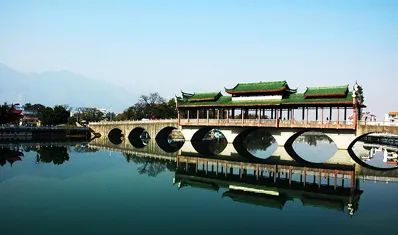The intention and realm of the landscape of Yaozhai in the mountains and rivers of the mountains and rivers of the mountains 丨 Chinese architectural culture
Author:China National News Time:2022.06.21
As a passage to communicate in the Lingnan area and the Central Plains region, the Nanling Corridor connects northern Gui, East Gui, south of Hunan, and northern Guangdong. Since ancient times, it has been Yao, Miao, Zhuang, Dong, Water, Buyi, Dai and other ethnic groups. Essence

The scenery of Yaozhai, autonomous counties in Longsheng, Guilin City, Guangxi. Jinxin confessed
The Yao people are widely distributed in South China. The Settlement of the Yao nationality and the village landscapes have their own characteristics due to the differences in living environment and living customs. Generally speaking, the Yao people living in Pingdi are very similar to the surrounding Han villages. The buildings are mostly civil engineering or muddy structures. The Yao people living in the mountains have a greater impact on the natural environment, and the buildings are mostly dry -column hanging towers. The Yao Village is not only a place for the production and life of the Yao people, but also the cultural landscape that integrates its wisdom and natural environment.
Builded in the mountains with water
All ethnic groups in the Nanling area have long been mixed, forming a symbiotic and prosperous living form. Due to the differences in natural geography, migration history, cultural and psychological factors such as natural geography, migration history, and cultural psychology in the Nanling Corridor, the settlement of the settlement villages has different styles, but its construction methods are similar to each other. , Present the settlement pattern of extension from the center.
The Nanling Corridor is an important passage from north to south in the history of the Yao nationality. The Yao ancestors from the north first came to Hunan to Hunan, and then migrated south and southwest to Guangdong, Guangxi, Guizhou and other places. The migration route between them is complicated, and the Yao nationality is rejuvenated between the three places, and eventually concentrated in the area of Xianggui. There are many mountains in this area, and it is easy to form a natural defense barrier.
"Anyone who gathers in the crowd, wants to support long -term years, and give self -sufficient self -sufficiency for self -sufficiency, you must choose danger and can be cultivated, and there is a place of water. It has the place of these two. The ground, this is natural. "
This is the description of the settlement of the settlement of the settlement of the settlement of the settlement of the settlement of the settlement of the settlement. It also fits the location of the site selection of the Yao nationality, that is, to largely consider the constraints of natural factors, choose the place where the mountains are surrounded by the mountains and the water, and use the terrain to enhance the defense capabilities.
The distribution of Yao villages is characterized by large decentralized and small settlements. When the residence is hilly, Yaozhai is built on the mountain, conforming to the terrain, and has good mountain life adaptability. Yaozhai pays attention to the overall layout. The buildings are stacked along the mountain.
Water is closely related to the origin of human civilization. Lands with abundant water volume are often the birthplace of the settlement villages. Yao villages live in water and rivers, showing half of the scattered point that conforms to the terrain. The complex and changeable terrain and landforms also created the relationship between Yaozhai and the water system. In plain areas with large water systems, wide river channels, and dense river networks, Yaozhai is multi -linearly distributed on a gentle slope or desktop on the side of the river. Yaozhai, built on Pingba or half -hill, is usually surrounded by water on three sides, which is convenient for production and life.
In ancient Chinese philosophy, "qi" is the basic element of natural things. The traditional Chinese culture believes that the "qi" of landscapes is ideal. The site selection model of the Yao settlement "Tibetan wind and gas" is also a comprehensive wisdom that integrates a variety of influencing factors.
Wind and Rain Bridge: Cultural symbols of poetic habitat
Around Yaozhai, the trees were lush and beautiful. The winding river enriches the building layout inside Yaozhai, and it has also become the foundation of the construction of water system landscapes. The landscape buildings such as the wind and rain bridge, which provides a natural and interesting space for people's public life.

Fengyu Bridge in Yaoxiang, Fuchuan, Guangxi. Photo Source: Futuan Yao Autonomous County People's Government website
The wind and rain bridge, the Yao compatriots, also known as the "Liangqiao" or "Fuqiao", are not only the iconic buildings of the Yao village, but also commonly lived in villages such as Dong, Miao, and Zhuang. Fengyu Bridge is usually built on the river in front of the village, and the villagers have the longing for the villagers for a better life. Even if there are no rivers around the villages, there are no rivers around, and the wind and rain bridge must be built on the field of the village entrance to protect feng shui.
The wind and rain bridge is usually composed of gallery pavilion, cross -bridge, and pier. The bridge body is mostly wooden structure and is connected by chiseling. The bridge is paved with fences and benches on both sides to form a gallery walkway. The pier is built on the pier, most of which are worm -like wooden frames. Straight railings and wide stools are placed on both sides of the gallery for people to stop and watch the scenery. Local people will gather in Tingqiao and attic when they work or holidays. The wind and rain bridge is not only a promenade walkway used in Yaozhai, but also a cultural symbol that reflects the people of the Yao people yearning for poetry habitat.
The Yao village is a masterpiece of harmonious coexistence in human and nature, and is a model for reasonable use and adapting to the environment. Its beautiful landscape not only witnessed the symbiosis and prosperity of the Yao people and the nationalities such as the Han, Zhuang, Miao, and Dai, but also a far -reaching nostalgia for the nostalgia.
Author unit: Southeast University's Chinese National Visual Image Research Base. This article is the research results of the National Social Science Foundation "Casting the Chinese Nation Community Awareness" research special "Analysis of the Visual Image Category Analysis of the Chinese Nation Community" (project number 20VMZ008).
Source: China National News
- END -
Tongan is here!If you have any questions, find TA

June 24Together with the future to the futureThe launching ceremony of the Enterpr...
You can't drink like this, do you know?
Milk is one of the favorite diets in people's daily life. The benefits of drinking milk are now more and more recognized by the public. Milk is rich in calcium and vitamin D. But do you know, although...